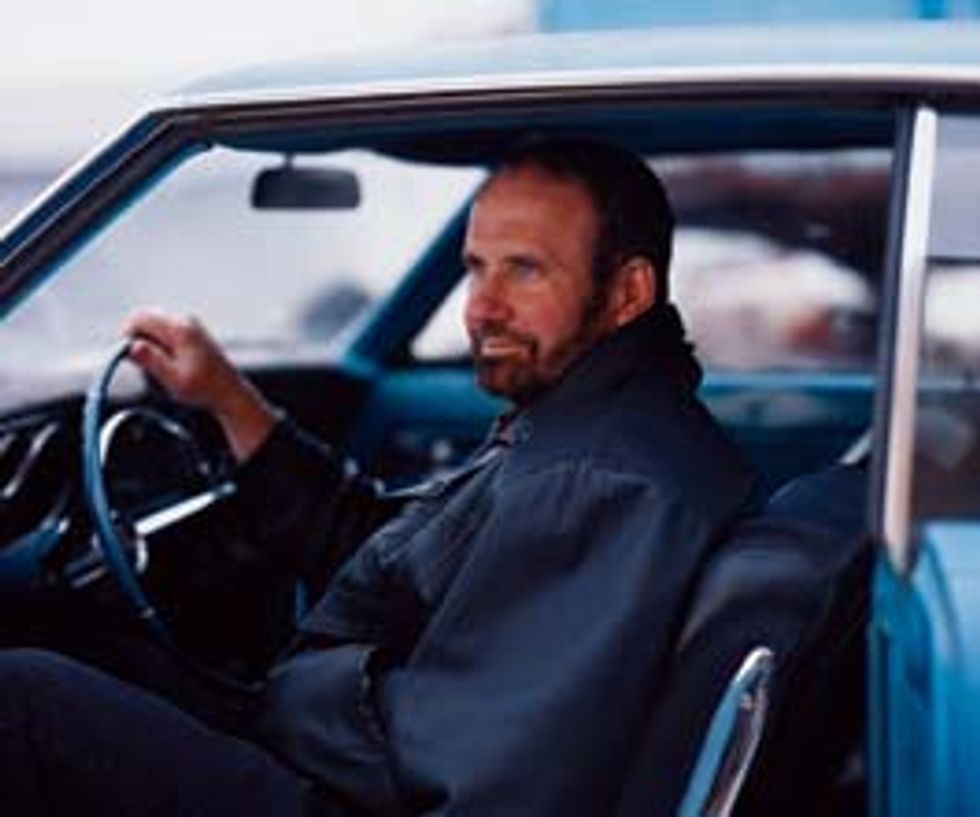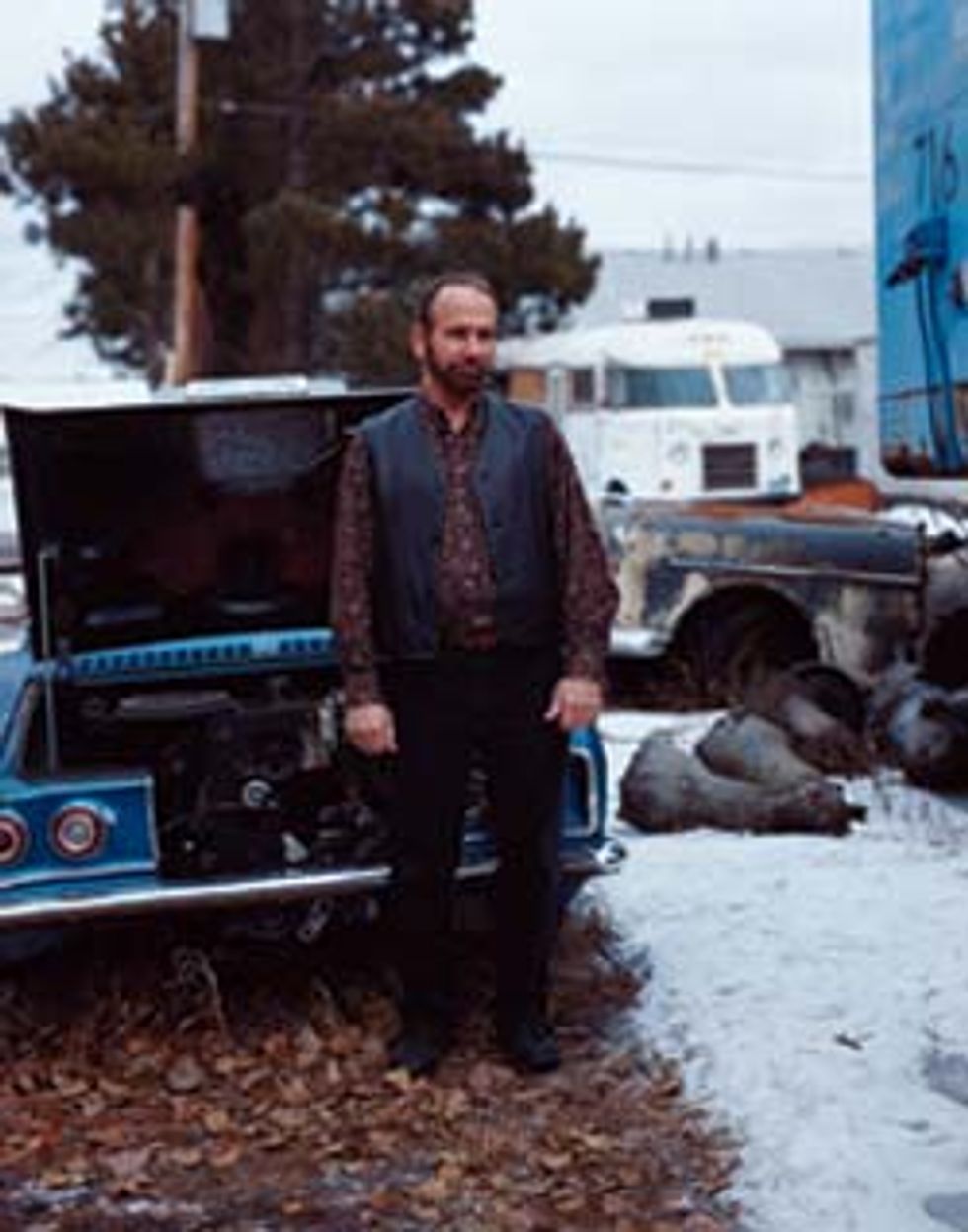You've probably never heard of Corliss Orville Burandt. I certainly hadn't, until someone dropped a 10-page fax on my desk that Burandt had sent in response to last year's IEEE Spectrum article "Top Ten Tech Cars," which featured several hybrid electric cars.
In that fax, Burandt claimed that almost all hybrid cars on the market incorporate a version of his patented invention, and more faxes followed, with the documentation to back up his assertions. Burandt's patent was for a method called variable valve timing, which controls how long the fuel and air intake valves on an engine's combustion cylinders stay open, changing the rate of combustion according to engine speed and load. His invention also employs a detonation sensor inside each cylinder of a car engine to help control how much air and fuel mix together during combustion. The technology optimizes fuel burn rates so the engine works as efficiently as possible, constantly adjusting to the prevailing operating conditions. That adjustment is important in hybrid cars, because it helps the engine shift smoothly between electric and gasoline modes of operation.

But there were two problems. Burandt didn't own the patent, and Investment Rarities Inc., in Minneapolis--which had initially provided funds to develop Burandt's inventions--had failed to pay the U.S. Patent and Trademark Office approximately US $40 000 in maintenance fees that were due on the 12 patents Burandt had assigned to the company in exchange for funding. Because no one had paid the maintenance fees, which are due 3-1/2, 7-1/2, and 11-1/2 years after a patent is issued, all 12 patents had expired and entered the public domain.
Burandt and I stayed in touch off and on for about a year. Despite a decade of poverty and transient living situations--for a time Burandt was homeless--he and his better-off friends managed to preserve a prototype of his invention, housed in a sky-blue 1965 Chevrolet Corvair sitting in the garage of an auto shop in the Minneapolis exurb of Ham Lake.
I visited Burandt and the Corvair at the shop the day before Christmas Eve. Burandt was dressed in a black leather vest over a paisley shirt and black jeans. His sleepy gray eyes would occasionally flutter shut as if he were in a trance. He greeted me with a hearty handshake and immediately started into his story. His dream, he told me, was to have car engines communicate with satellites that would calibrate the engine to operate at optimum efficiency depending on where you were driving. The big automakers were interested, and he and his team were doing car-and-pony shows and some consulting work in Detroit throughout the early 1980s.
"At that time, we had so much money that we had several professional people to transport the car, and I think, for lack of a better word, I had my own personal attendant," Burandt recalls with a wistful smile.
He was eating in fine restaurants, talking with top executives at big automakers, and turning down multimillion-dollar offers to develop engines for the likes of General Motors Corp., all because, he says, Investment Rarities thought it could get more money. He believed then, as he believes now, that his invention could change the world for the better--cheaper and cleaner cars, a better environment--by using his variable valve technology on two-valve-per-cylinder engines (engines can have between two and eight valves per cylinder, depending on the design). Burandt estimates this setup would reduce the amount of moving parts in a cylinder head by 50 percent.
But when Investment Rarities' primary business--gold trading--went south in the late 1980s, the company dropped Burandt and his patents. "We spent a lot of money trying to market the patents to automakers," Tom Stock, controller at Investment Rarities, said in a phone interview. "And other than some of the test platforms we ended up selling, we got a lot of rejection letters on it, and it got to the point where we couldn't hang on to anything other than our core business."
Without a backer, the technology Burandt had worked so hard to create sat idle, fodder for other inventors who subsequently cited one or another of his 12 patents as prior art for their own inventions--66 times so far, by Burandt's count. But nothing tangible was being made with his patents, certainly not any money.
"I lost my house, everything. I lived in that car," Burandt says, gesturing toward the garage where the Corvair sat. "That was my address, that's how far I went down the tubes. I started having some stress-related health problems, and I was declared crazy. It says right on my papers, 'obsessive-compulsive behavior associated with engine patents.'"
The annals of technology are filled with stories about inventors whose epic struggles over their inventions drive them over the edge. Some take their own lives, such as FM radio pioneer Edwin Armstrong and eponymous engine inventor Rudolph Diesel, with whom Burandt strongly identifies. Others manage to function at a high level while indulging their demons, such as Nikola Tesla, who, like Burandt, suffered from obsessive-compulsive disorder.
Burandt's obsession seems to go beyond the merely clinical; he lives for the variable valve mechanism and through it. When, after over an hour of conversation, I asked to see the prototype, his medicated eyes sparkled to life and, like a kid on Christmas morning, he bounded through the door leading from the shop office to the garage and showed me the modified Corvair.
He controlled this rusty heap's engine with a toy-car radio controller, circa 1975. Sure enough, even though he had not fired up the engine in over a year, it revved up, revved down, idled, and conked out, depending on how Burandt toggled the controller. Whether or not this device really could have been Burandt's ticket to the good life is a moot point now, because without a valid patent, all Burandt has are his dreams of what might have been.
While Burandt's case has its own special circumstances, a patent lawyer I spoke with emphasized that the same thing could happen to any inventor. According to Steven J. Frank, a partner at Goodwin Procter LLP, in Boston, the key thing for inventors to remember when dealing with development partners is not to assign the patent, as Burandt did, but instead to give the partner an exclusive license. That way the inventor maintains control over the invention, can monitor and ensure payment of maintenance fees, and can work language into the contract that stipulates that the exclusive license can be terminated if the licensee does not make a reasonable effort to commercialize the technology.

As for Burandt, odds are he'll never make a dime off his expired patents, even though he managed to get Investment Rarities to assign the patents back to him in 2002. Because the company intentionally let the maintenance fees go unpaid well beyond the 30-month grace period, Burandt owns a worthless piece of paper.
For his part, Burandt says he believes that maintenance fees are a tax on the small inventor like himself, someone who can't afford to pay for something he believes he has already earned by virtue of having had the patent granted--that is, a limited monopoly on the technology.
"Maintenance fees are a capitalist tool for driving small people out of business. And the small guy, in my opinion, is always the guy who gets us five years ahead," Burandt said to me as I headed for the door. "That's what the patent deal does for society: the sooner we get something birthed and into the incubation period, the greater the potential to capitalize on the large-scale employment we can derive from it. So we need the guys birthing, and we need to help keep them alive by abolishing maintenance fees."
I drove away from the auto shop, past tornado-bait trailer parks cheek by jowl with giant strip malls filled with last-minute holiday shoppers. I realized then how appropriate it was that I hadn't met Burandt wherever it was he lived now or taken him out for lunch or seen him anywhere but at the garage. The garage is where Burandt really lives, even when his body is sleeping somewhere else.